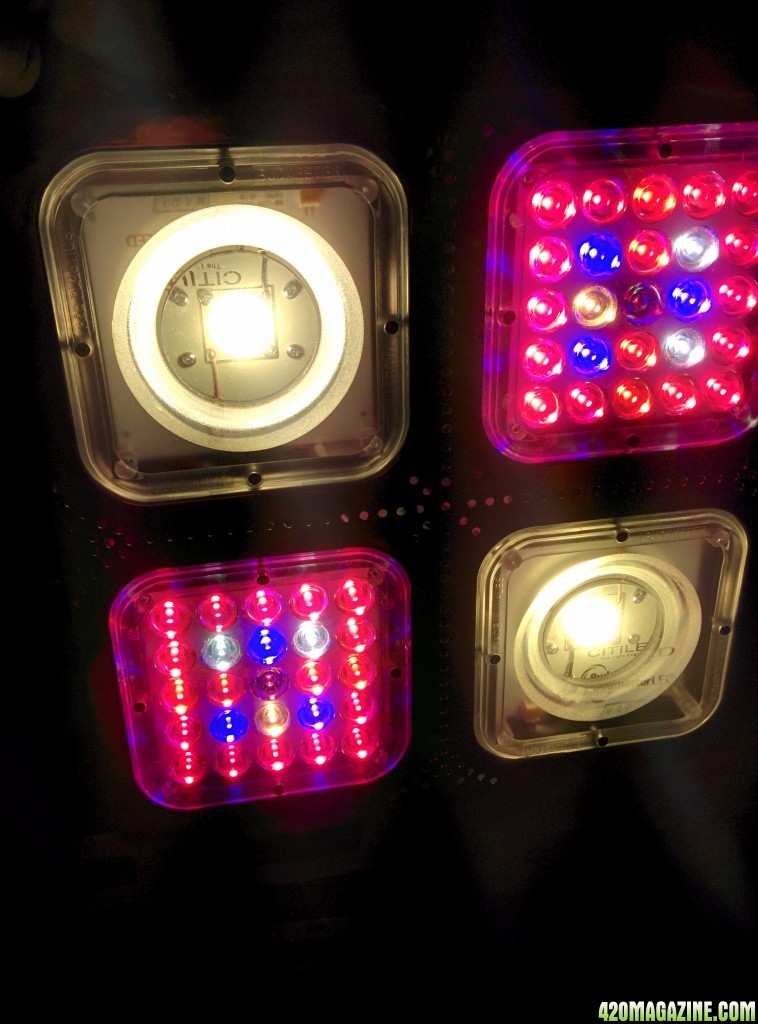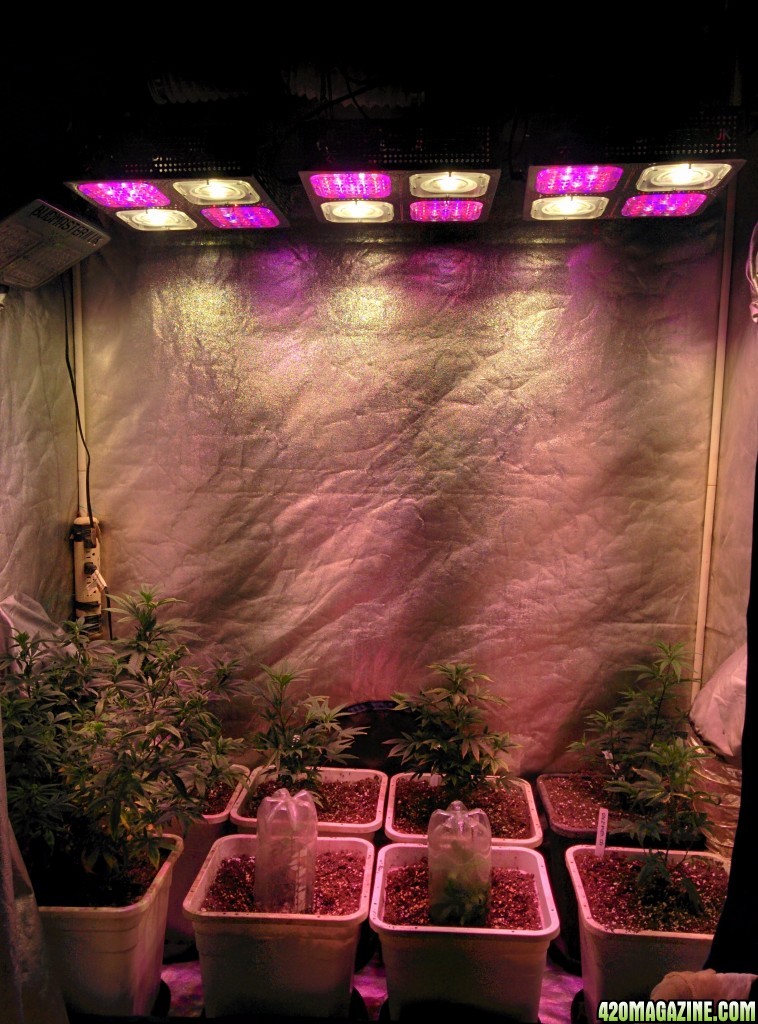SGL D
New Member
With all the numbers flying around regarding LEDs here are some metrics of value
PAR Light — Photosynthetically Active Radiation
Light between 400 and 700 angstroms (nanometers, 10^-8 meters)
PAR is for Plants, Lumens is for Humans
Not all PAR is useful
Terrestrial plants don't need a lot of green/yellow light to photosynthesize — just a little to stimulate caratenoids
Some evidence that UVA (315-400nm) and UVB light (280-315nm) helps cannabis growth
Most UVB light is absorbed by ozone layer — does not support additional UVB lamps in lights
Measuring PAR — Photosynthetic Photon Flux (PPF)
Measured as micro-moles (µ, or 10^-6) )of photons emitted per second
One Mole = 6.02 * 10^23 (Avagadro's Constant)
Photosynthetic Photon Flux Density (PPFD)
Micro-moles of photons emitted per square meter per second
Way more important to growers than PPF
An HID light might have huge PPF numbers at the bulb, but inverse square law of light means that the number of photons hitting a given area (PPFD) declines exponentially as the distance between the light source and the plant surface increases.
An LED light may emit very intense light but is so small that you have to raise it way off the canopy to get coverage
Daily Light Integral (DLI)
DLI = PPFD over the course of a light cycle
Measured as Moles of PAR photons per day
Example: a light emitting PPFD = 1000 running 12 hours emits a DLI = 43.2 moles/day
Computed as ((60 sec/min)*(60 min/hr)*(12 hrs/day)*(PPFD))/1 million
Current research indicates Cannabis grows best at PPFD = 1500 (DLI = 65) and temperature = 30 degrees C
Lighting Efficiency = PPFD/joule or PPFD/input watt
Measure of how well a light converts electrons to photons
Lights requiring supplemental AC or cooling fans will have very low numbers
Can also look at both purchase price per PPFD and five year cost per PPFD
How to Play Games With The Numbers
Report PPF (photons emitted by the bulb) rather than PPFD (photons hitting the plant)
Report readings at distances that would scorch a plant
Lights that emit intense PPF over a small area
Put reflective walls around the light to reflect the light back into the measurement area
Reporting overall PPFD for only a small portion of the growing area (Hot Spot)
Using inconsistent grid sizes
PAR Light — Photosynthetically Active Radiation
Light between 400 and 700 angstroms (nanometers, 10^-8 meters)
PAR is for Plants, Lumens is for Humans
Not all PAR is useful
Terrestrial plants don't need a lot of green/yellow light to photosynthesize — just a little to stimulate caratenoids
Some evidence that UVA (315-400nm) and UVB light (280-315nm) helps cannabis growth
Most UVB light is absorbed by ozone layer — does not support additional UVB lamps in lights
Measuring PAR — Photosynthetic Photon Flux (PPF)
Measured as micro-moles (µ, or 10^-6) )of photons emitted per second
One Mole = 6.02 * 10^23 (Avagadro's Constant)
Photosynthetic Photon Flux Density (PPFD)
Micro-moles of photons emitted per square meter per second
Way more important to growers than PPF
An HID light might have huge PPF numbers at the bulb, but inverse square law of light means that the number of photons hitting a given area (PPFD) declines exponentially as the distance between the light source and the plant surface increases.
An LED light may emit very intense light but is so small that you have to raise it way off the canopy to get coverage
Daily Light Integral (DLI)
DLI = PPFD over the course of a light cycle
Measured as Moles of PAR photons per day
Example: a light emitting PPFD = 1000 running 12 hours emits a DLI = 43.2 moles/day
Computed as ((60 sec/min)*(60 min/hr)*(12 hrs/day)*(PPFD))/1 million
Current research indicates Cannabis grows best at PPFD = 1500 (DLI = 65) and temperature = 30 degrees C
Lighting Efficiency = PPFD/joule or PPFD/input watt
Measure of how well a light converts electrons to photons
Lights requiring supplemental AC or cooling fans will have very low numbers
Can also look at both purchase price per PPFD and five year cost per PPFD
How to Play Games With The Numbers
Report PPF (photons emitted by the bulb) rather than PPFD (photons hitting the plant)
Report readings at distances that would scorch a plant
Lights that emit intense PPF over a small area
Put reflective walls around the light to reflect the light back into the measurement area
Reporting overall PPFD for only a small portion of the growing area (Hot Spot)
Using inconsistent grid sizes



 1 of topsoil, sand and manure.
1 of topsoil, sand and manure.

